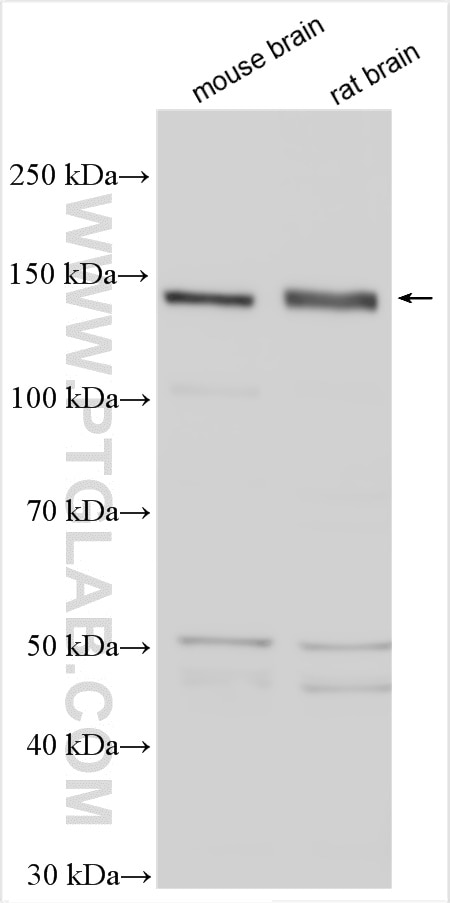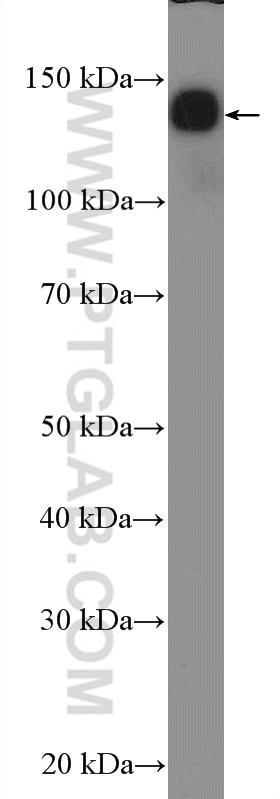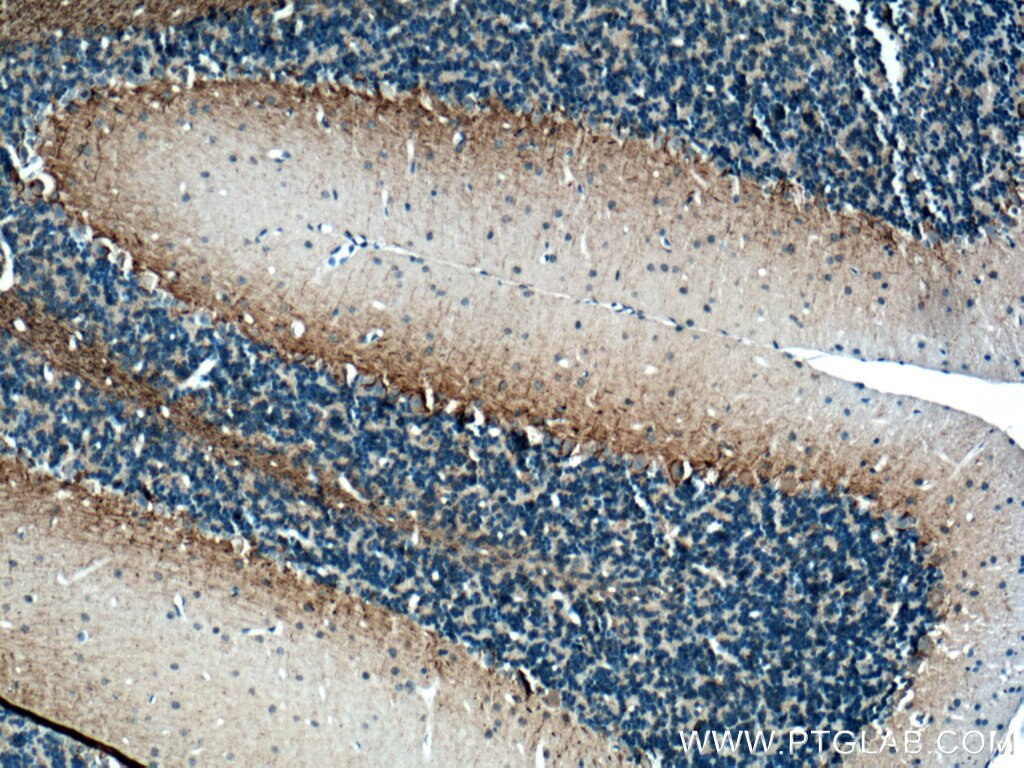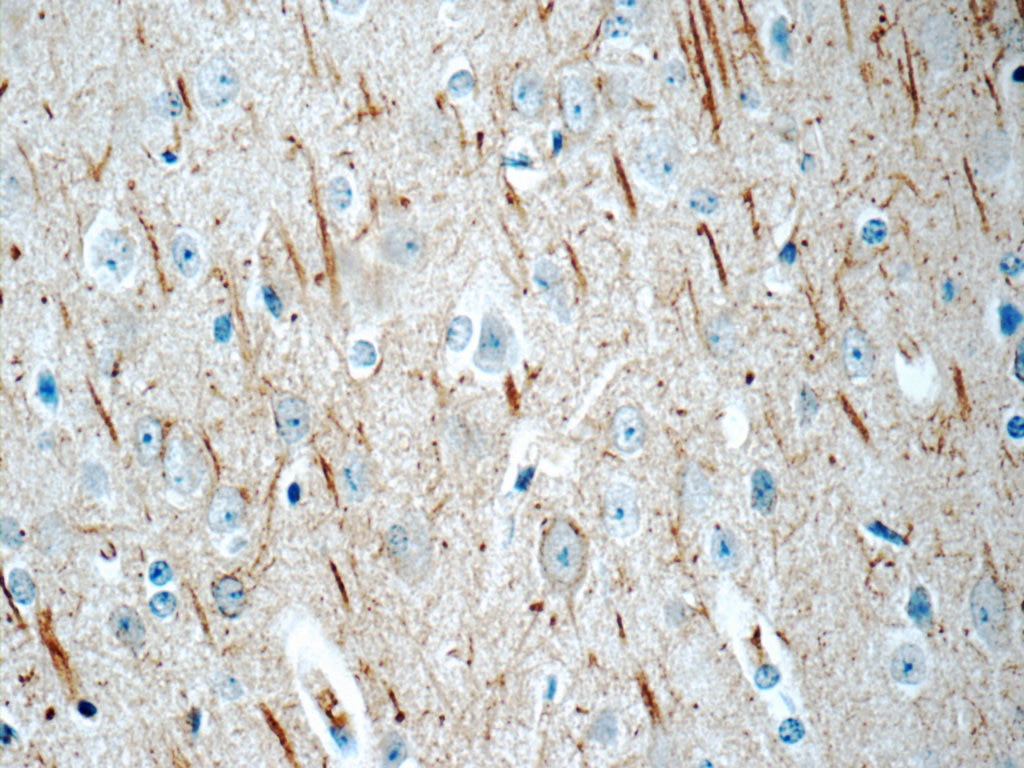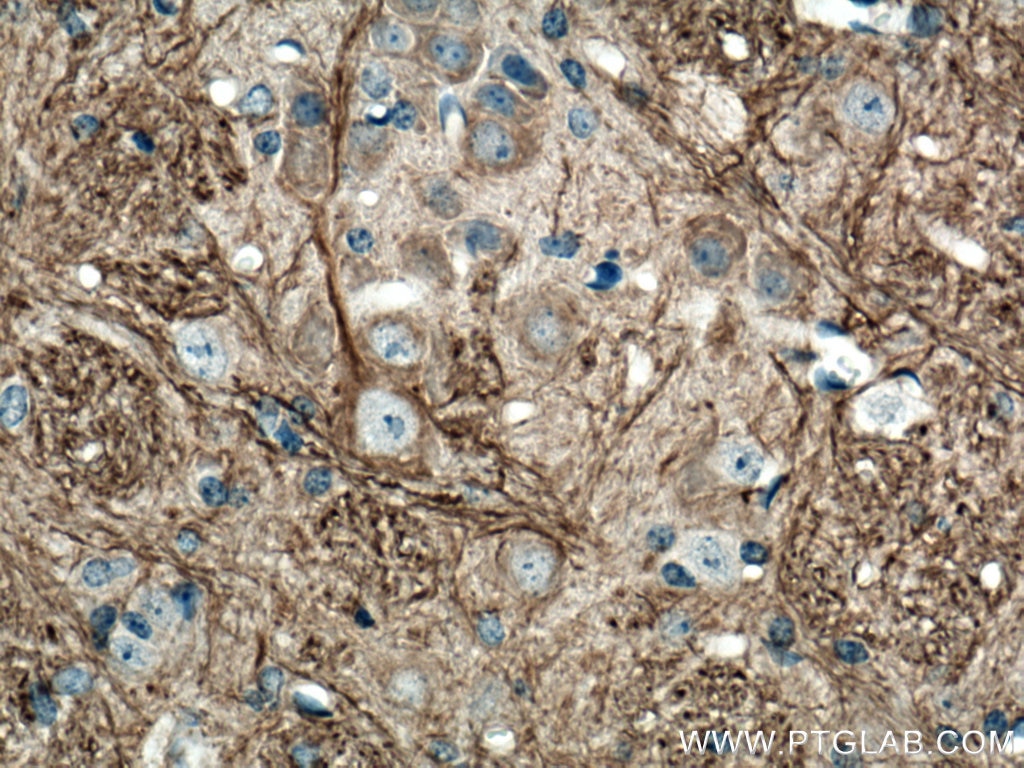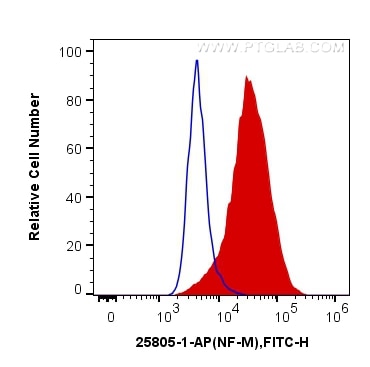Validation Data Gallery
Tested Applications
| Positive WB detected in | mouse brain tissue, rat brain tissue |
| Positive IHC detected in | mouse cerebellum tissue, human brain tissue, human colon tissue, mouse brain tissue Note: suggested antigen retrieval with TE buffer pH 9.0; (*) Alternatively, antigen retrieval may be performed with citrate buffer pH 6.0 |
| Positive IF-P detected in | mouse brain tissue |
| Positive FC (Intra) detected in | PC-12 cells |
| Positive FC detected in | PC-12 cells |
Recommended dilution
| Application | Dilution |
|---|---|
| Western Blot (WB) | WB : 1:2000-1:10000 |
| Immunohistochemistry (IHC) | IHC : 1:50-1:500 |
| Immunofluorescence (IF)-P | IF-P : 1:50-1:500 |
| Flow Cytometry (FC) (INTRA) | FC (INTRA) : 0.40 ug per 10^6 cells in a 100 µl suspension |
| Flow Cytometry (FC) | FC : 0.40 ug per 10^6 cells in a 100 µl suspension |
| It is recommended that this reagent should be titrated in each testing system to obtain optimal results. | |
| Sample-dependent, Check data in validation data gallery. | |
Published Applications
| WB | See 7 publications below |
| IHC | See 2 publications below |
| IF | See 5 publications below |
Product Information
25805-1-AP targets NF-M in WB, IHC, IF-P, FC (Intra), ELISA applications and shows reactivity with human, rat, mouse samples.
| Tested Reactivity | human, rat, mouse |
| Cited Reactivity | human, mouse, rat, canine |
| Host / Isotype | Rabbit / IgG |
| Class | Polyclonal |
| Type | Antibody |
| Immunogen | NF-M fusion protein Ag22709 相同性解析による交差性が予測される生物種 |
| Full Name | neurofilament, medium polypeptide |
| Calculated molecular weight | 102 kDa |
| Observed molecular weight | 140 kDa |
| GenBank accession number | BC002421 |
| Gene Symbol | NF-M |
| Gene ID (NCBI) | 4741 |
| RRID | AB_2880245 |
| Conjugate | Unconjugated |
| Form | Liquid |
| Purification Method | Antigen affinity purification |
| UNIPROT ID | P07197 |
| Storage Buffer | PBS with 0.02% sodium azide and 50% glycerol , pH 7.3 |
| Storage Conditions | Store at -20°C. Stable for one year after shipment. Aliquoting is unnecessary for -20oC storage. |
Background Information
NEFM, also named as NEF3 and NFM, belongs to the intermediate filament family. Neurofilaments are the 10nm intermediate filaments found specifically in neurons. They are a major component of the cell's cytoskeleton, and provide support for normal axonal radial growth. Neurofilaments usually contain three intermediate filament proteins: L, M, and H which are involved in the maintenance of neuronal caliber. The names given to the three major neurofilament subunits are based upon the apparent molecular weight of the mammalian subunits on SDS-PAGE:NF-L, 65-68 kDa; NF-M,145-160 kDa and NF-H, 200-220 kDa. This antibody recognizes endogenous NF-M protein.
Protocols
| Product Specific Protocols | |
|---|---|
| WB protocol for NF-M antibody 25805-1-AP | Download protocol |
| IHC protocol for NF-M antibody 25805-1-AP | Download protocol |
| IF protocol for NF-M antibody 25805-1-AP | Download protocol |
| Standard Protocols | |
|---|---|
| Click here to view our Standard Protocols |
Publications
| Species | Application | Title |
|---|---|---|
Theranostics Implantation of regenerative complexes in traumatic brain injury canine models enhances the reconstruction of neural networks and motor function recovery. | ||
Biomater Sci 3D printing collagen/heparin sulfate scaffolds boost neural network reconstruction and motor function recovery after traumatic brain injury in canine. | ||
Mol Autism RNA sequencing and proteomics approaches reveal novel deficits in the cortex of Mecp2-deficient mice, a model for Rett syndrome. | ||
Front Cardiovasc Med Vagus Nerve Stimulation in Early Stage of Acute Myocardial Infarction Prevent Ventricular Arrhythmias and Cardiac Remodeling. | ||
Neurosci Lett Overexpression of miR-338-5p in exosomes derived from mesenchymal stromal cells provides neuroprotective effects by the Cnr1/Rap1/Akt pathway after spinal cord injury in rats. | ||
Cell Biol Int Study of the protective effect on damaged intestinal epithelial cells of rat multilineage-differentiating stress-enduring (Muse) cells. |
